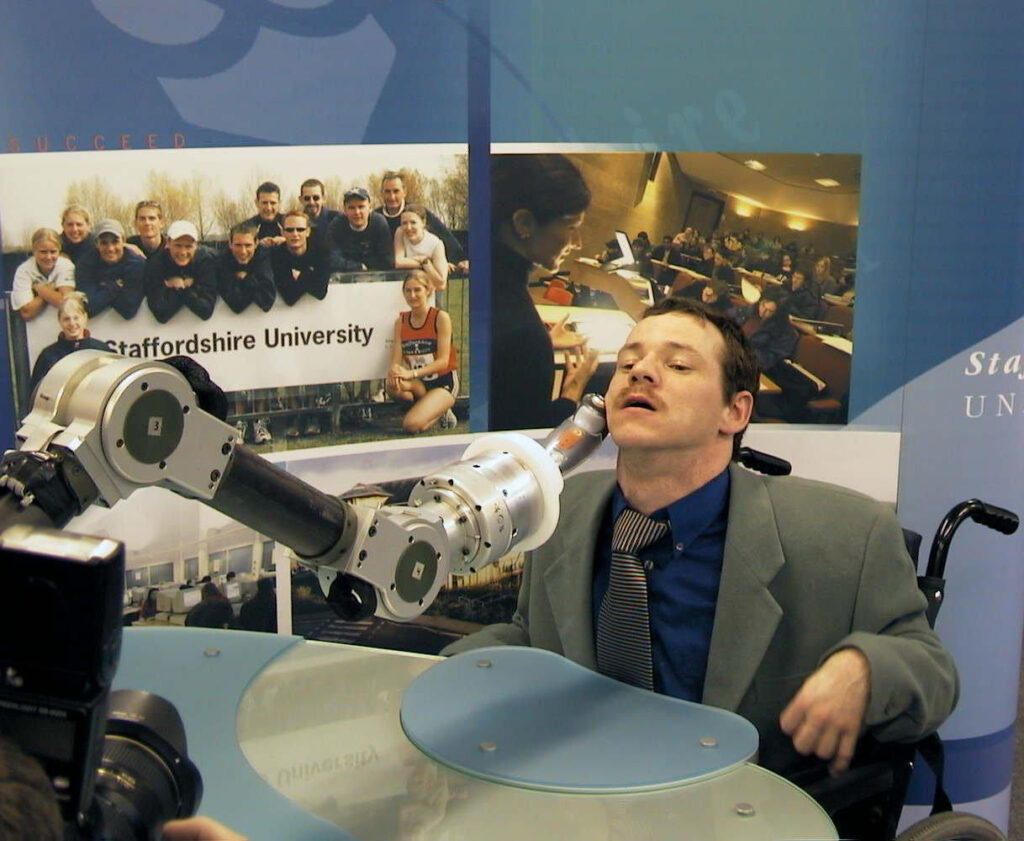The assistance of disabled, elderly and persons with
special needs become to be one of the most important service applications of the
robotic systems in the near future. Humans care and service
demands an innovative robotic solution to make easier the day-life
of these people in home, workplace and
institutional care environments. In this way the quality of life
of the important part of population improves toward their social
integration.
During the last years the
rehabilitation technology is developing towards more flexible and
adaptable robotic systems. These robots aim at supporting disable
and elderly people with special needs in their home environment. Furthermore,
most advanced countries are becoming to be aging societies, and the percentage
of people with special needs is already significant and due to grow. There have
been very interesting developments in this field, such as Paro (K.
Wada, 2002), a robot which provide psychological and social effects to human
beings, or Dexter (L. Zollo,2001) and RAID (G.
Bolmsjo, 1995), which are mounted on a wheelchair and helps in welfare tasks to
the disable people. Another interesting robots is Handy 1
(Topping, 2002) and MANUS (Kwee, 1997). These systems are a
commercially available robotic system capable of assisting the most severely
disabled people in self-feeding, and personal hygiene tasks.
Along this road, the
MATS robot is a robotic system that can climb the
different planes of the environment (wall, table, bath,…) in order to perform
numerous personal care and service applications such
as kitchen plates and cup manipulation, toothbrush and toothpaste coordinated
manipulation in the bathroom and entertainment games in the living room.

